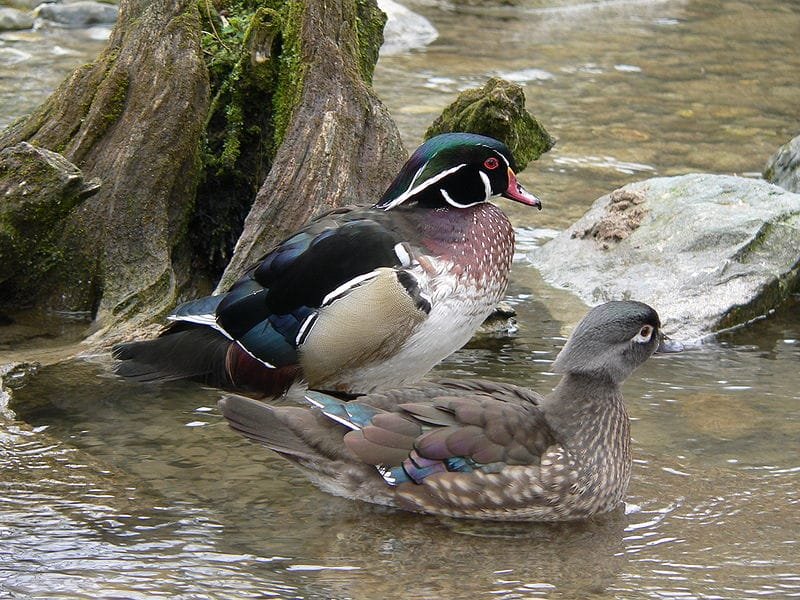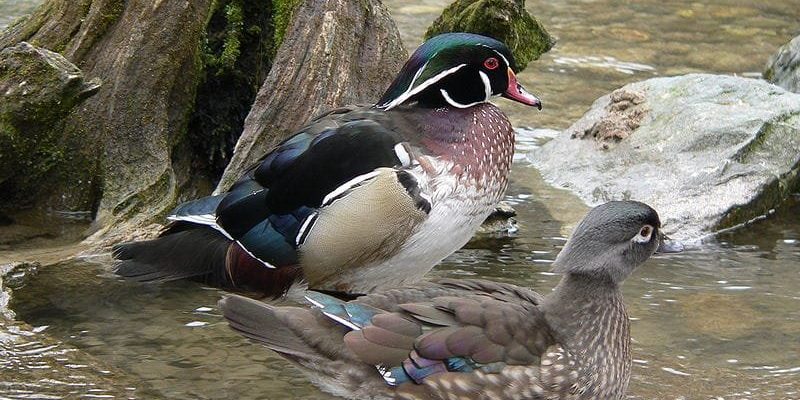
Wood ducks are unique in many ways, but one of their most interesting traits is how they choose their nesting sites. They aren’t just content to nest anywhere; they prefer the cozy confines of tree cavities or even man-made structures like nesting boxes. This preference reflects their adaptability, showing how they can thrive in both wild and urban environments. So, what does the nesting process look like, and how do these lovely ducks raise their young? Let’s dive a little deeper.
The Nesting Sites of Wood Ducks
Wood ducks are quite particular when it comes to their nesting locations. They instinctively look for cavities in trees, often high above the ground. These cavities provide safety from predators, making it a desirable choice for the expectant mother. The trees they favor typically include deciduous trees like oaks and sycamores, which are abundant in their habitat.
Interestingly, wood ducks are also known to accept artificial nesting boxes. These boxes can be set up in backyards or other areas where wood ducks might reside. By offering a suitable location, you can really help out these birds during nesting season. If you ever notice a wood duck checking out your yard, it might just be scouting for a cozy spot to lay her eggs!
Here’s a cool fact: wood ducks can sometimes be spotted nesting near water, such as ponds, lakes, or wetlands. These areas provide ample access to food and a safe haven for their young once they hatch.
Nesting Behavior and Egg Laying
Now that we’ve talked about where they like to nest, let’s look at the nesting behavior itself. A female wood duck will typically lay between 6 to 15 eggs, depending on her health and environmental conditions. These eggs are usually a soft cream color, which helps them blend into the natural setting and stay hidden from predators.
The mother duck will lay one egg a day until she has completed her clutch. Here’s the thing: wood ducks don’t start incubating the eggs until the last egg is laid. This synchronized timing means all the chicks hatch around the same time, which is crucial for survival as they can leave the nest soon after hatching.
Speaking of leaving the nest, wood ducklings are precocial. That means they are relatively mature and mobile shortly after hatching. Within just a day, the little ducklings are ready to jump out of the nest and head towards water, often with mom leading the way. It’s both a heartwarming and fascinating sight!
The Incubation Period
After laying her eggs, the mother wood duck will incubate them for about 28 to 35 days. During this time, she becomes very dedicated to her role. You might wonder how she manages this while also staying safe. Well, wood ducks are quite crafty!
While incubating, the female will often leave the nest for short periods to feed, drink, and preen. However, she remains close enough to protect her eggs from intruders. Additionally, if she senses danger, she’ll fluff her feathers to cover the eggs better, camouflaging them even more. This protective behavior is a vital part of ensuring her future brood is safe and sound.
Once the incubation period is over, things get really exciting. The eggs start to crack open, and soon enough, tiny, fluffy ducklings emerge, eager to explore the world.
The First Days of Ducklings
After hatching, the ducklings are ready for action. They can walk and swim almost immediately! This quick mobility is a key survival trait. In the wild, staying close to water is vital. Those first few hours are crucial, as the mother leads her tiny army to safety in the water.
Ducklings will often stay with their mother for several weeks. During this time, they learn essential skills: how to forage for food, dodge predators, and find safety in their habitat. Here’s a fun little story: people often witness these adorable ducklings waddling in a line behind their mom, creating one of nature’s cutest scenes!
As they grow, their feathers will begin to change. You might find that after about two months, they develop the characteristics of adult wood ducks. They’ll begin to take on the bright colors and striking patterns that make wood ducks so eye-catching.
Post-Nesting and Survival Challenges
Once ducklings grow into young adults, they face new challenges. Although they’ve learned a lot from their mother, the world can still be a dangerous place. Predators like raccoons, foxes, and birds of prey pose significant threats. Additionally, environmental factors like habitat loss and pollution can impact their survival.
Interestingly, wood ducks are also known to be social during the non-breeding season. They often gather in flocks, which can offer some safety in numbers. If you’re lucky enough to spot a flock of wood ducks, take a moment to appreciate the beauty of their vibrant plumage and the playful nature of their interactions!
As they mature, wood ducks must also navigate the transition to adulthood. Usually, they reach sexual maturity within a year, meaning they’ll soon be looking for nesting sites of their own. It’s a beautiful cycle that continues year after year, thanks to their resilience and adaptability.
Wood ducks are truly remarkable creatures. Their nesting habits and lifecycle showcase not just the beauty of nature but also its complexities. From their unique nesting behaviors to their protective parenting, they illustrate the importance of nurturing young life in the wild.
Supporting wood ducks and their habitats is essential, especially given their adaptability to different environments. Whether it’s installing a nesting box or simply appreciating these stunning birds in their natural surroundings, we can all play a part in their story. So, the next time you see a wood duck or hear its distinctive call, remember the journey that led to that moment and the wonderful life cycle behind it.

